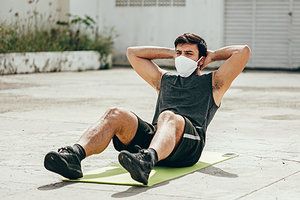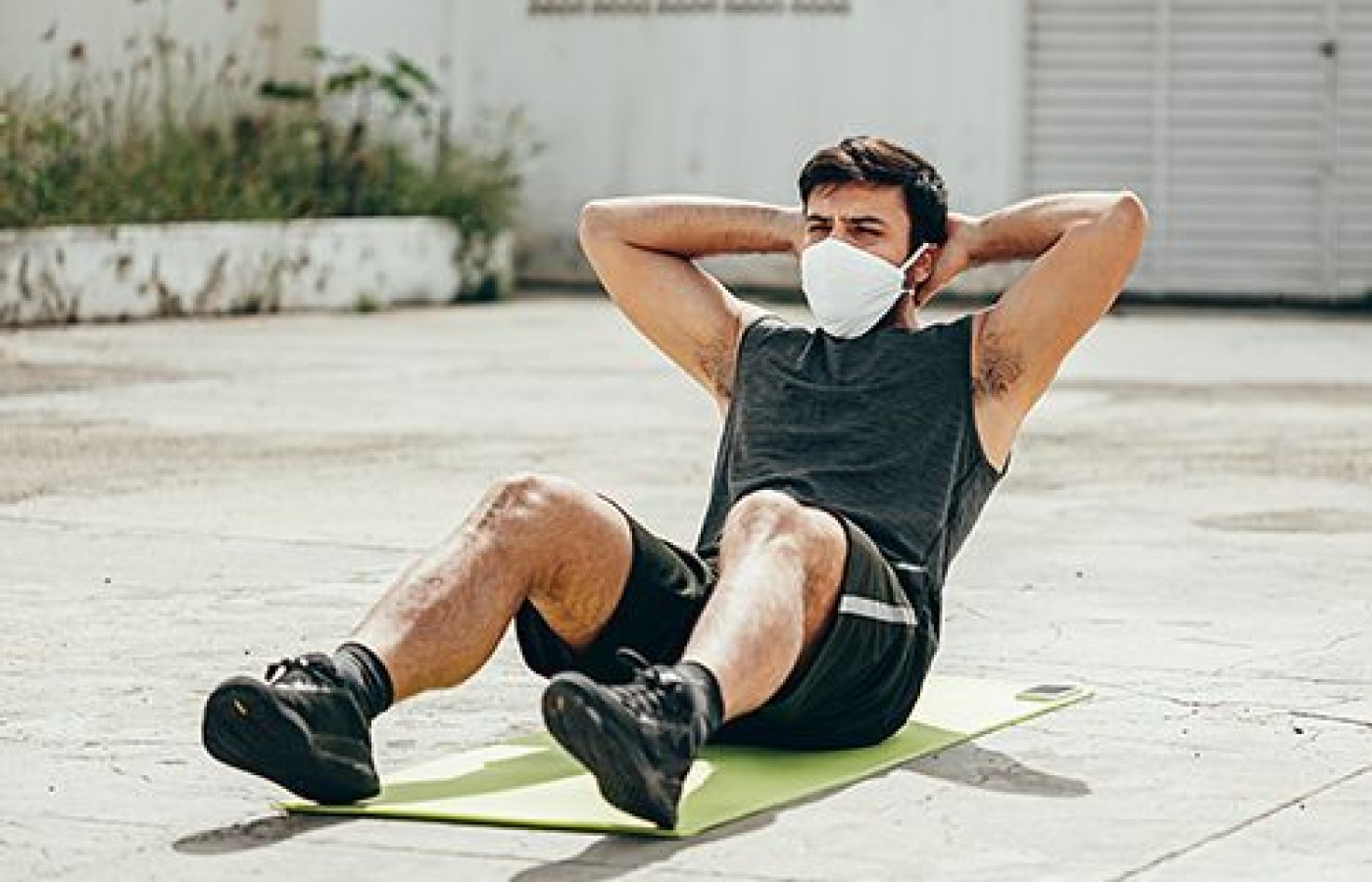Refund requests are an unavoidable part of running a chiropractic practice. Whether a patient is unhappy with their care, believes an adjustment caused harm, or simply changes their mind, these situations must be handled carefully to avoid escalation. While chiropractors are not legally obligated to issue refunds in most cases, there are times when doing so is the best business decision to protect the practice.
Exercising During COVID-19
For me, exercise helps keep my head clear, stay toned, and offers immune-system enhancement and avoidance of illness. Now more than ever, we all need physical activity to improve mood and well-being, and to reduce stress and anxiety.
For the first and second quarter of the year, I worked fewer hours due to COVID-19. Staying "in touch" with patients via phone and live in the office was a priority. I felt responsible to convey the message of the therapeutic potential of exercise and movement. This message is relevant whether we are in the midst of a pandemic or not.
My approach was to use evidence-based recommendations from the second edition of the Physical Activity Guidelines for Americans (PAGA) as a goal to recommend, achieve and maintain for my patients:
- Youth: Sixty minutes of age-appropriate, moderate-to-vigorous activity every day (mostly aerobic activity); include muscle-strengthening activity on at least three days per week and bone-strengthening activity at least three days per week.
- Adults: Moderate-intensity aerobic activity for 150-300 minutes per week, or vigorous-intensity activity 75-150 minutes per week, or an equivalent combination; along with muscle-strengthening activities two or more days per week.

For more information and an interactive activity planner to help patients create an exercise plan, direct them to https://health.gov/paguidelines/moveyourway/ and https://health.gov/MoveYourWay/Activity-Planner/.
My recommendations have been intended to be a stress reducer, provide a little cardio, a little flexibility and a little strength. It's clear that more patients have been feeling the effects of sitting longer durations at home, watching television or being at the computer more than usual. My own estimates from doing body composition analysis for years is that the average person burned approximately 100-200 less calories a day during the second quarter of the year!
Exercising While Social Distancing
With gyms just reopening (in some places) and warmer weather prevailing, outdoor exercise is a more important option than ever to stay in shape while social distancing. If it's warm outside, I do it outside; if it's cold, I do it inside. The outdoors are a solid option for three important reasons:
- It's way easier to avoid people outside than in the gym.
- I like open-air and I still think it's "friendly."
- I live on the beach; some studies show that being in nature reduces stress and anxiety. In fact, people experience a drop in stress levels after spending just 20 minutes outside, according to a Frontiers in Psychology study.
Tucker's Lymphatic & Immune System Flow Exercises
During March 2020 (when stay-at-home orders were first issued, particularly here in California), I posted short videos on my Facebook page for patients who were not able to come in to the office. My goal: to provide something patients could do at home for lymphatic system flow and immune enhancement.
- Swings – bodyweight. Start with 1-2 minutes and build up to 30 minutes if desired.
- March in place with arm drivers. Move the arms overhead and down with elbows at side of body; arms out in front of your body and then pull elbows backward behind you.
- Swings with exercise bands.
- Arm punches. I go into horizontal adduction (across the body). Do this with and without bands.
- Dead bugs with a hamstring stretch.
- Bridge up and down with various challenges.
- Single-leg balance. Progress to "running man / woman'"exercises.
- Push-up challenge. Based on recent research (Justin Yang, et al.) for the heart, I recommend building up to 40 reps.
- Squats – bodyweight. How old do you want to live? Build up to that number of reps.
- Turkish get-ups. These can be done with or without weights.
- Arch-ups (prone).
- V-ups (supine).
If you can help a person progress from being sedentary to just getting out and walking, that alone will ease depression and have enormous health benefits. If the person already walks, I recommend an accelerated pace and longer distance compared to previous walks.
Exercising at Home: Considerations
Home gyms became necessary this year. For patients looking for home fitness equipment to purchase, I discussed the type and applications on the basis of what they will use. Common home equipment include bands, treadmills, ellipticals, stationary bikes, rowing machines, free weights, ropes, kettlebells, sand bags, etc.
I make sure to ask about the application: personal use, family, home gym/office, and overall space capacity. Get creative! Use water bottles, canned goods, books, and/or boxes as weights for your workouts. Don't underestimate the power of bodyweight movements. Upgrade your workout by adding bands (or your children) for resistance. Equipment is an investment in their health. Some things to consider:
- Whom do I compete with? I can't play team sports for a while; what do I do?
- What are your strategies for users to keep the equipment clean and safe?
- Do different household members have different needs?
- What devices give me room for growth in cardio, strength, flexibility, etc.?
- Do I need neural training, flexibility, performance training, etc.?
- What are the age ranges, fitness level, and weight ranges of each household person?
- Identify the various preferences of each household member.
There are tons of free and affordable workouts you can follow along with from your living room – even more now that gyms continue to offer online workouts. Here are a few favorites of mine (these are just examples):
- Yoga: More than 6 million people strike a pose with Yoga With Adriene on YouTube.
- Strength training: Shape.com has a ton of bodyweight workouts you can do anywhere in the world, without any equipment.
- HIIT and boxing: Boxing gym EverybodyFights is now hosting workouts on Instagram daily.
My 30-year-old son, Josh, is "using Strava to track my runs, Peloton for Ab workouts, and Shred for upper-body workouts." My daughter, also age 30 (yep, twins!) is using The Class by Taryn Toomey ($49.99/month; https://digitalstudio.theclass.com/browse), as well as:
- Soho Yoga: LA-based yoga studio ($7/month): https://www.patreon.com/sohoyoga/posts
- Peloton App: Offers spin, yoga, stretch, HIIT classes, etc. ($12.99/month): https://www.onepeloton.com/digital/checkout
- Lauren Roxburgh ($29.99/month): https://tv.laurenroxburgh.com/catalog
- Jetsweat Fitness - HIIT, yoga, stretch classes ($19.99/month): https://www.jetsweatfitness.com/
Here's what my daughter shared: "I switch off months that I do each one, but it's all still way cheaper than what I was paying for in-studio workouts and I can do it at any time, any length. Love it!"
Another Option: BFR Training
If you don't want to take up any space, but want help upgrading your workouts, the latest is blood flow restriction (BFR) training. Inflatable bands are worn around the upper portion of the arms and/or legs to safely slow the blood in the limb. Simple, low-load exercise produces profound muscle "burn" comparable to intense anaerobic training. Benefits of BFR include:
- Safe and effective.
- Less time. Big results.
- Fast set-up and full-body workout in less than 30 minutes.
- Reduces overall stress on joints without sacrificing training effectiveness.
- Maintain strength through injury recovery.
- Evidence-based. Proven results.
- Benefits include full-body systemic response, anti-aging, increased performance, quick recovery.
I encourage every patient to work out; doing it as a family will provide you with a common lingo and foundation to be able to cultivate mental and physical fitness together as a unit! It is more important than ever to take the time to work out your body and keep your immune system strong. Share these tips with your patients (and your own family) today.



